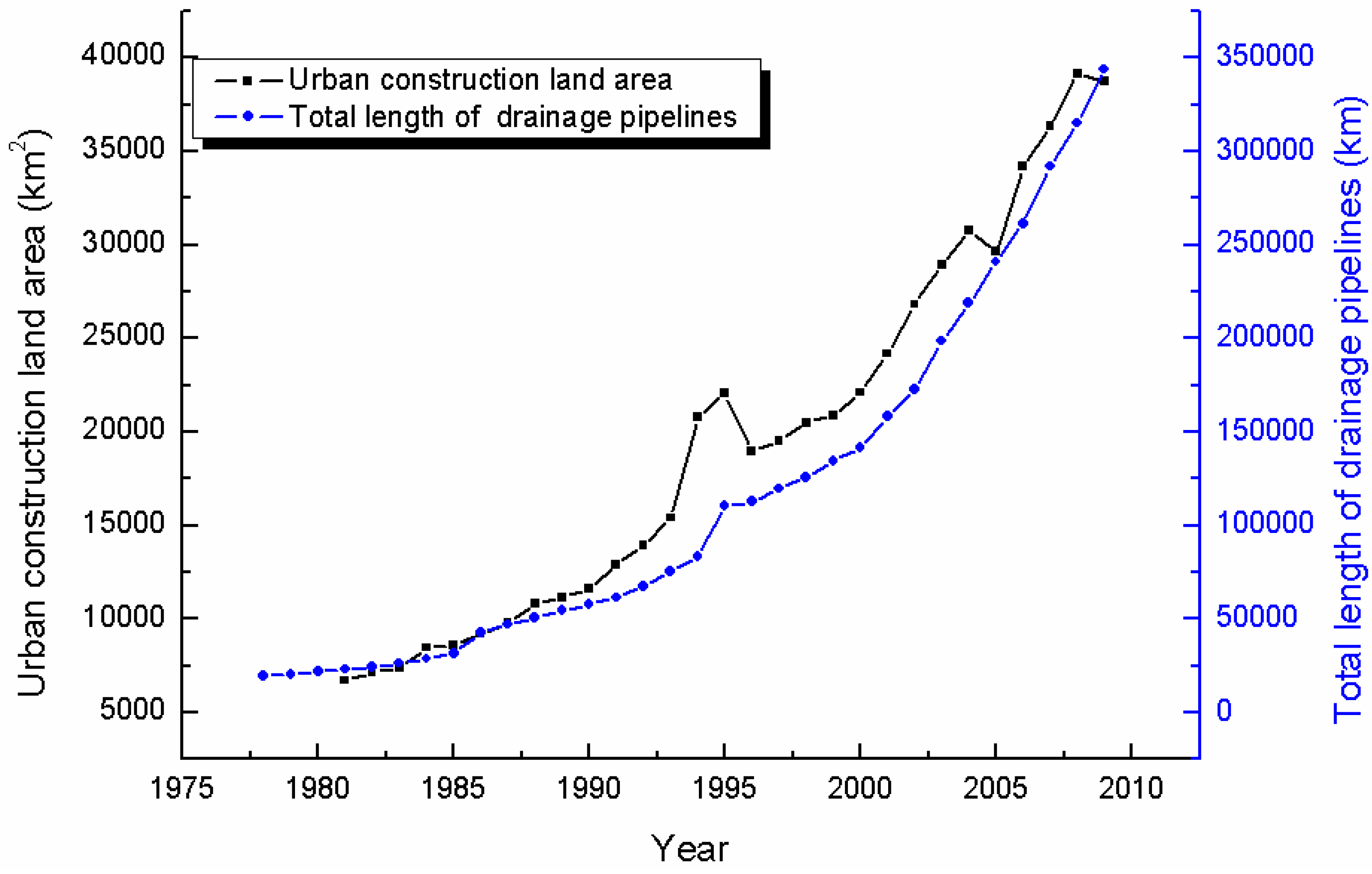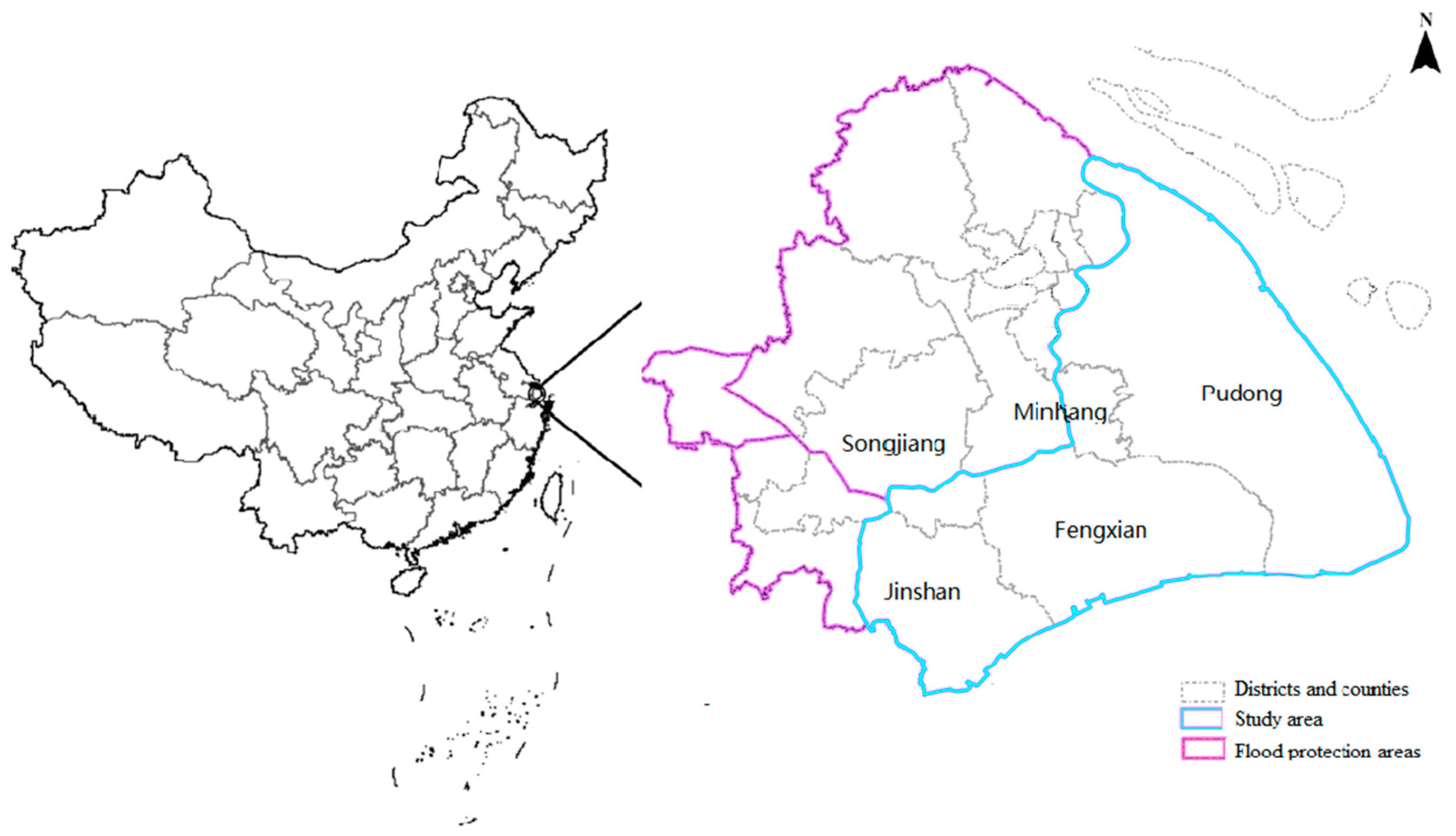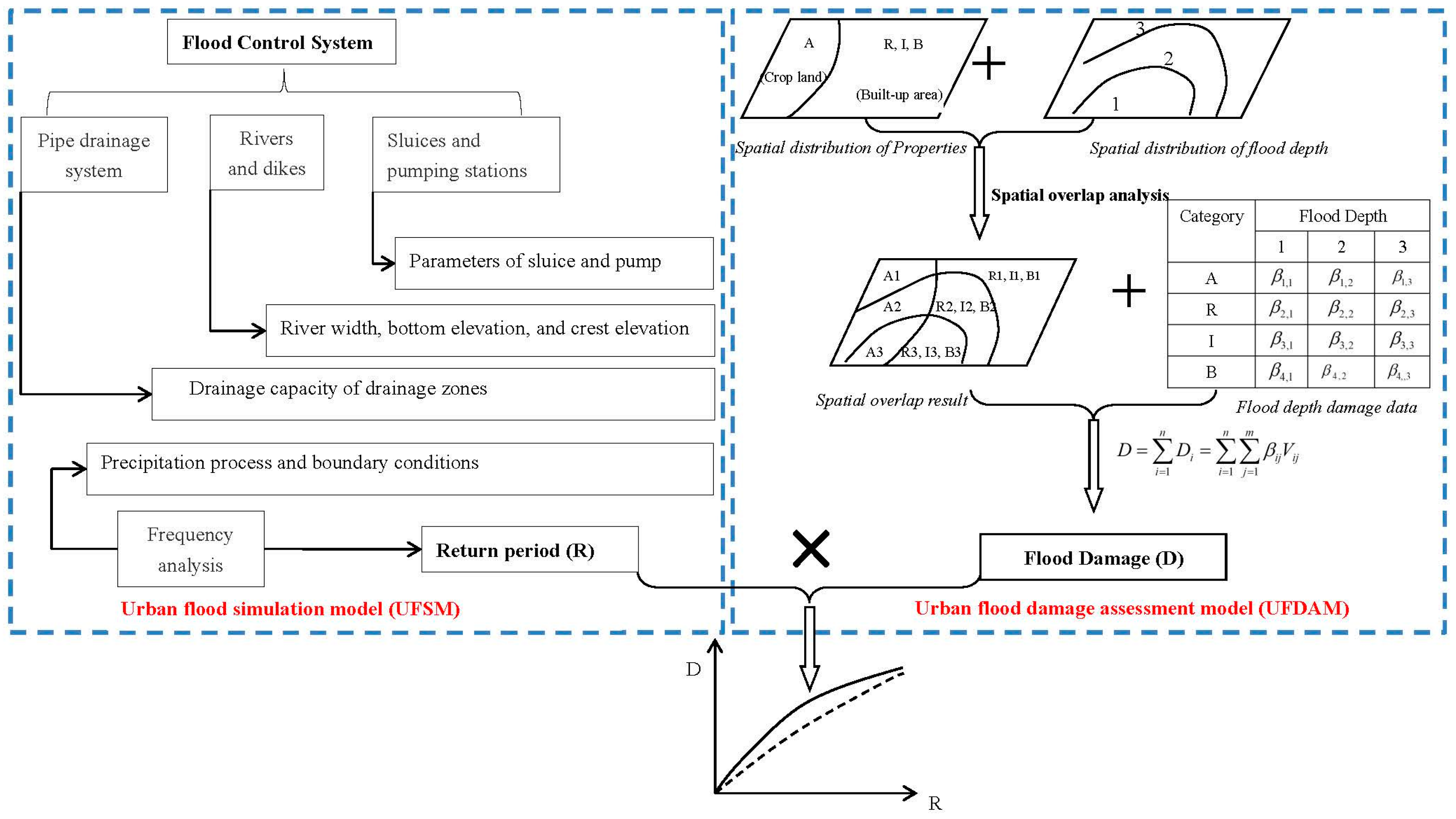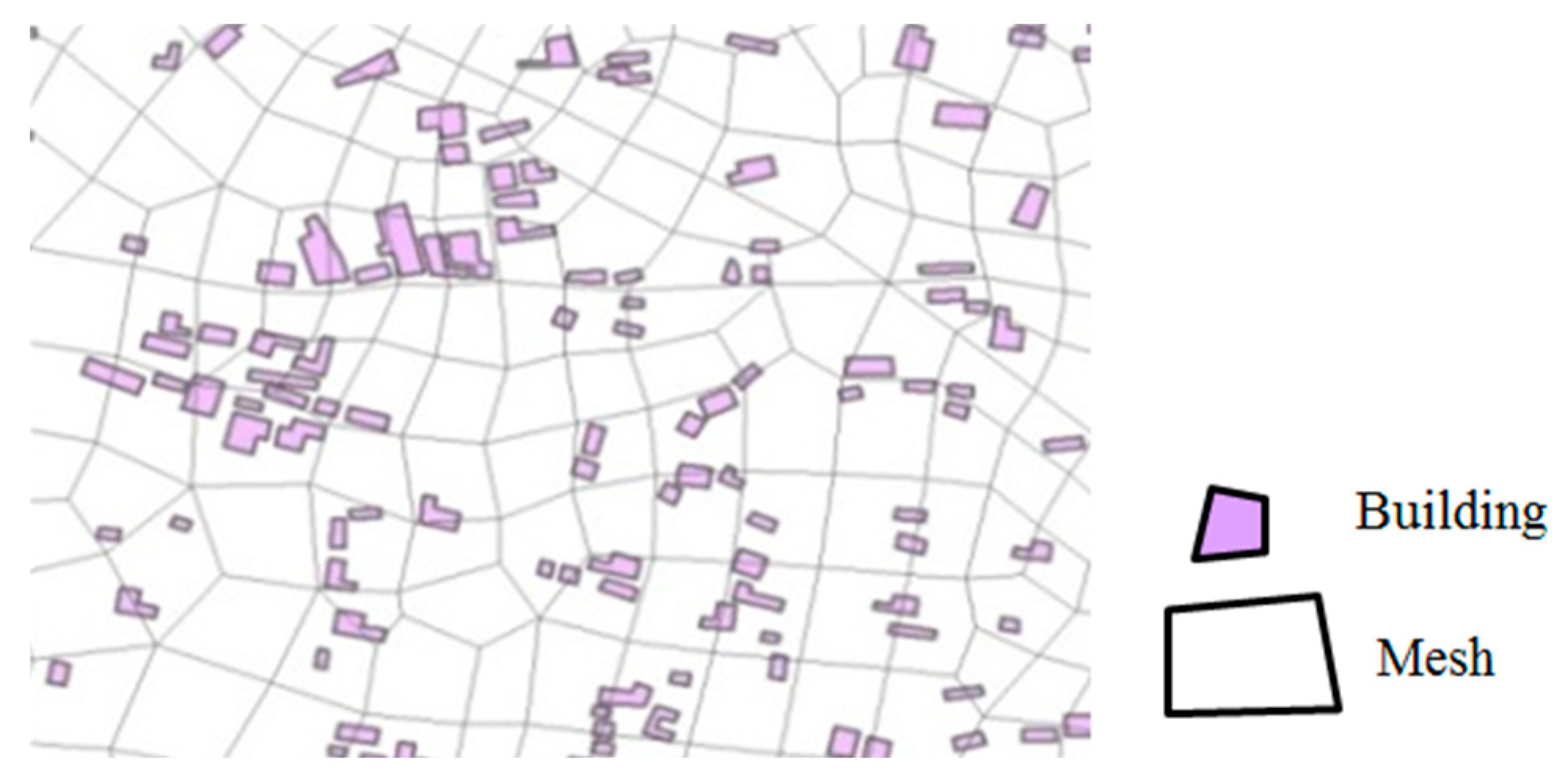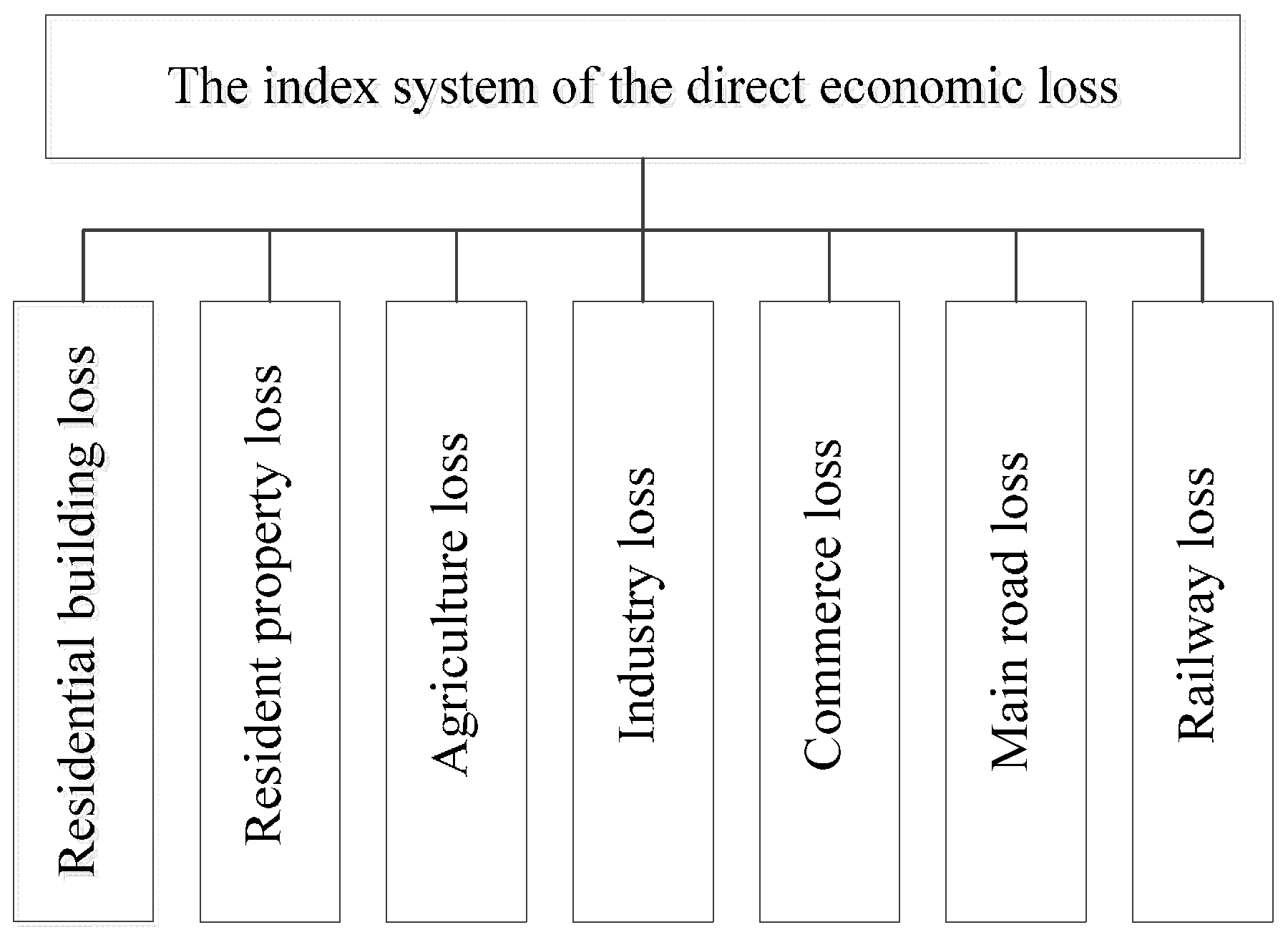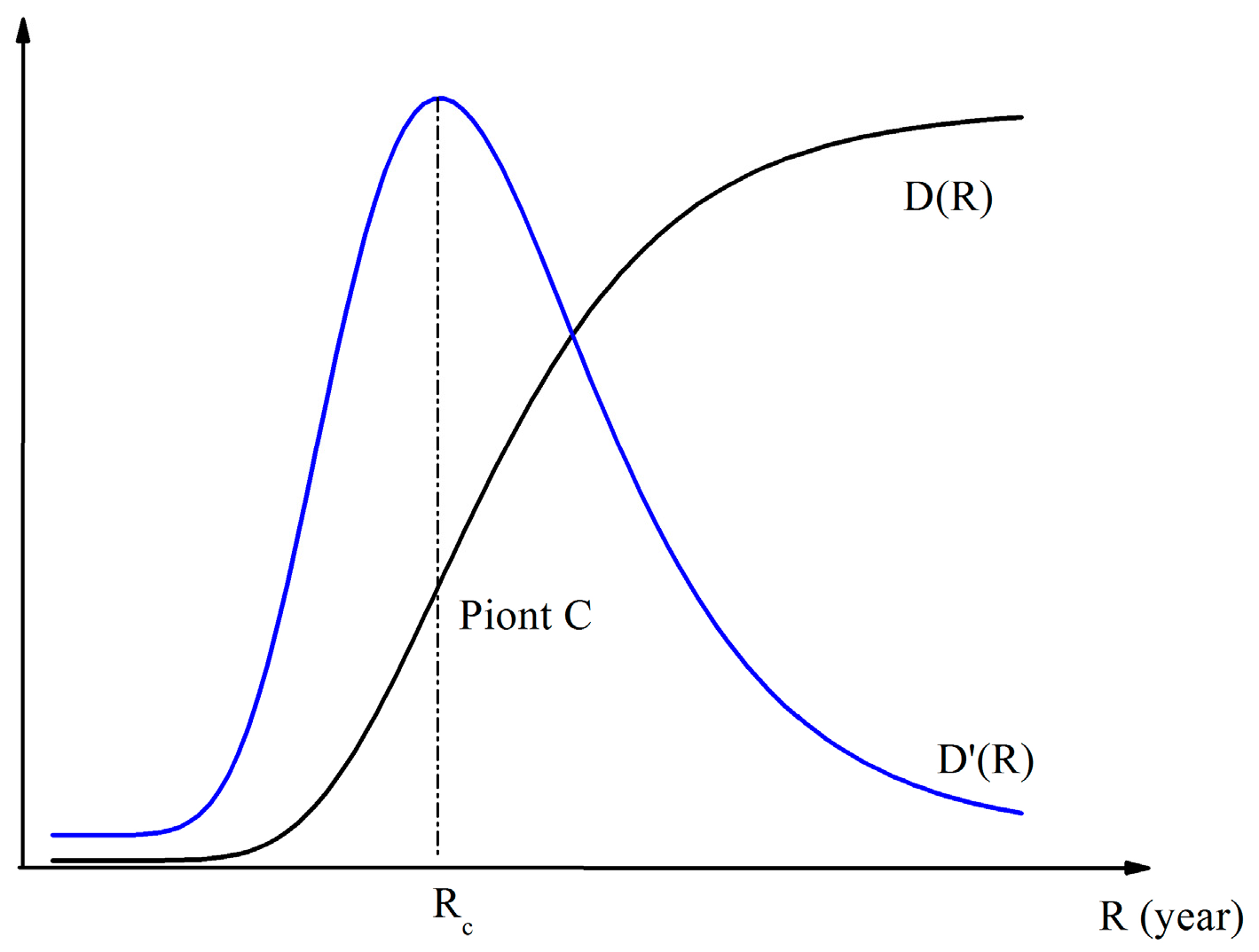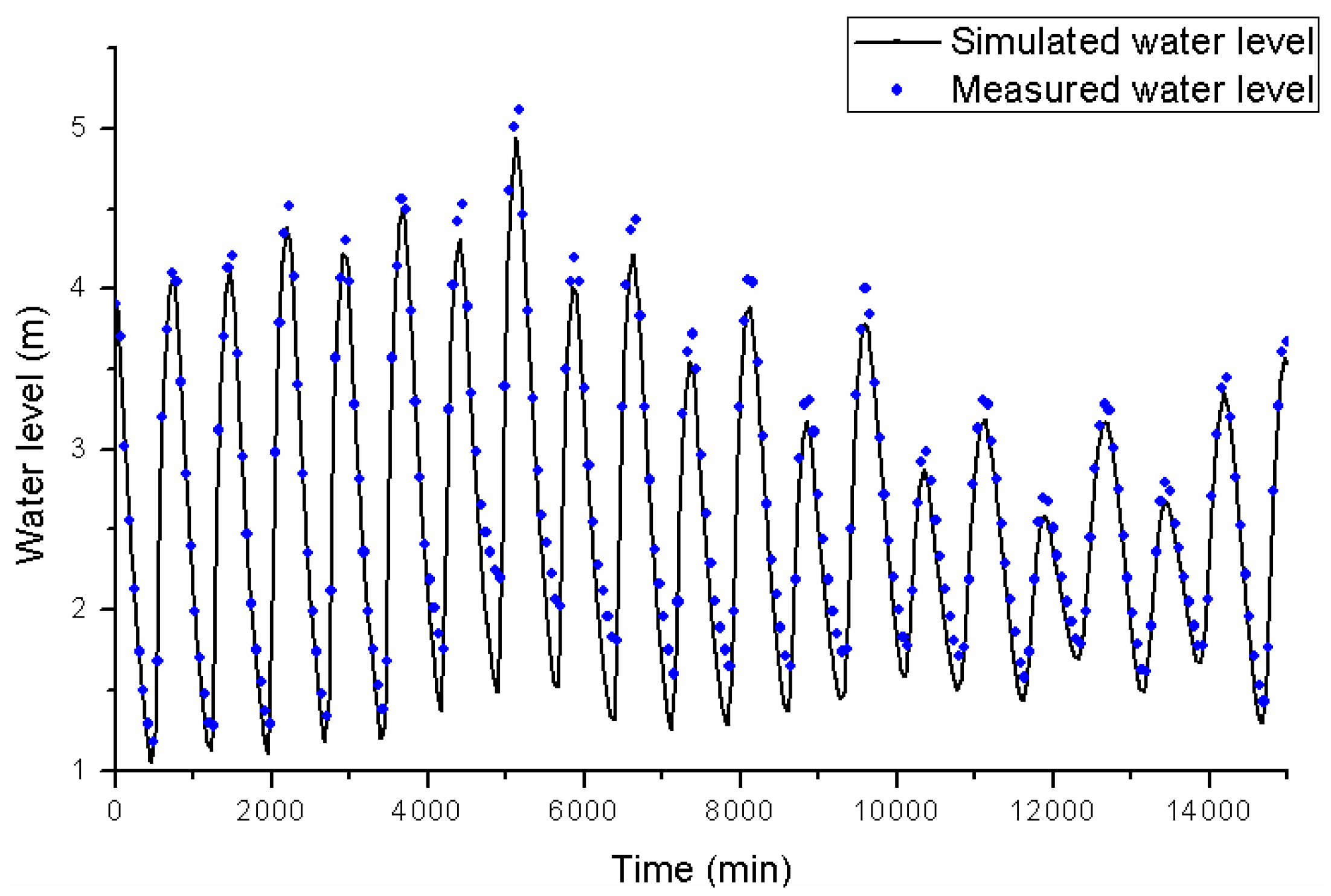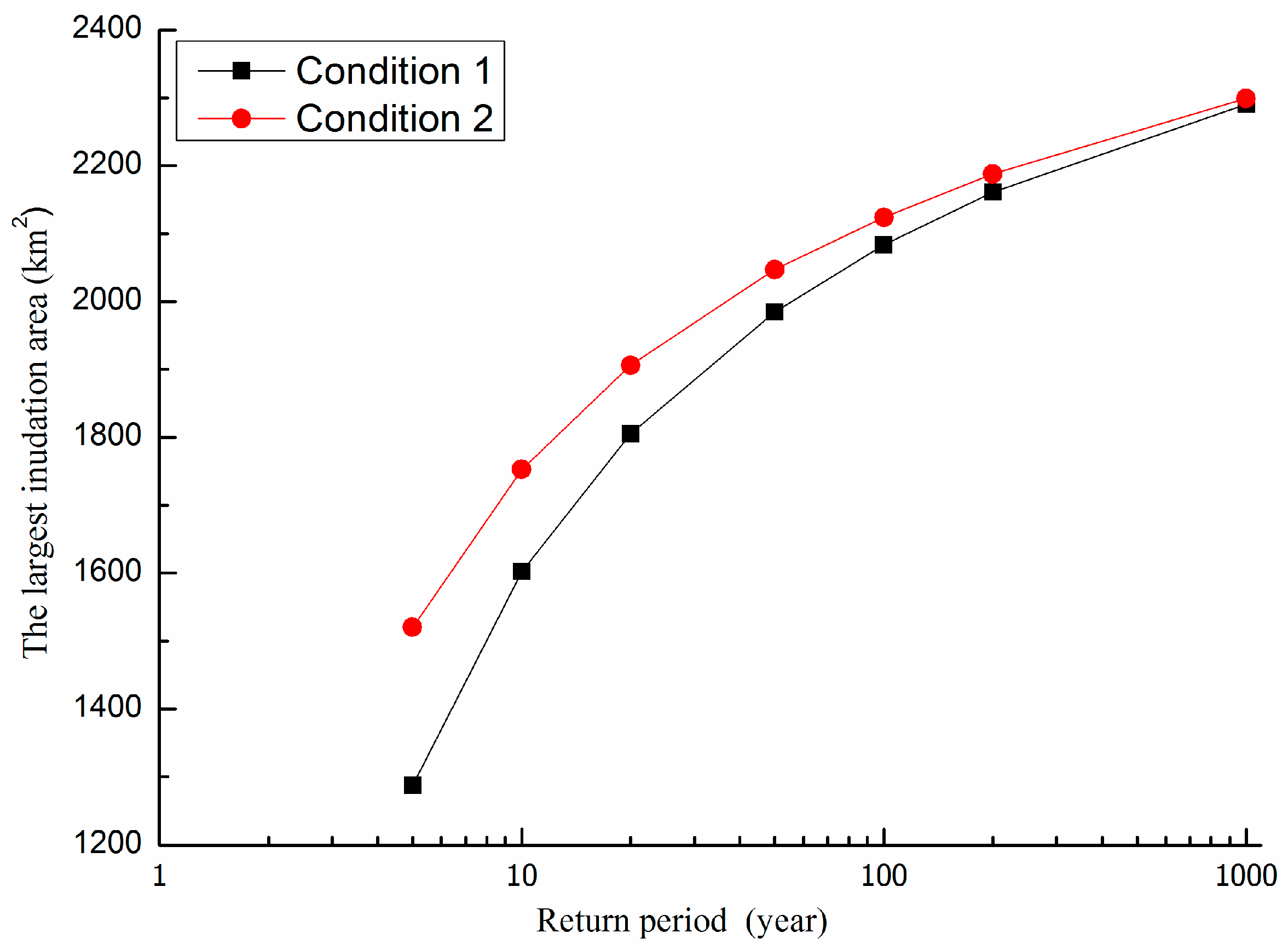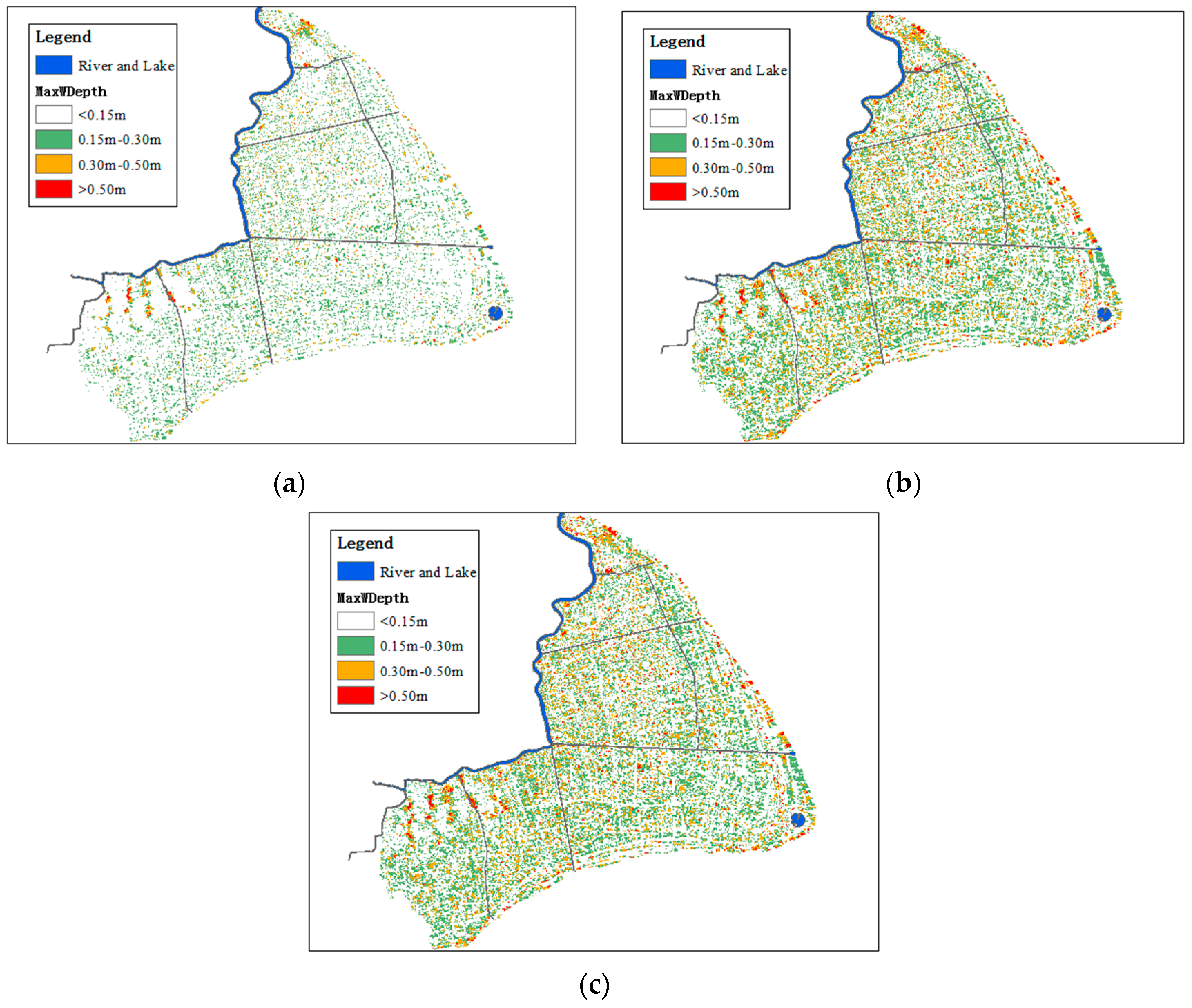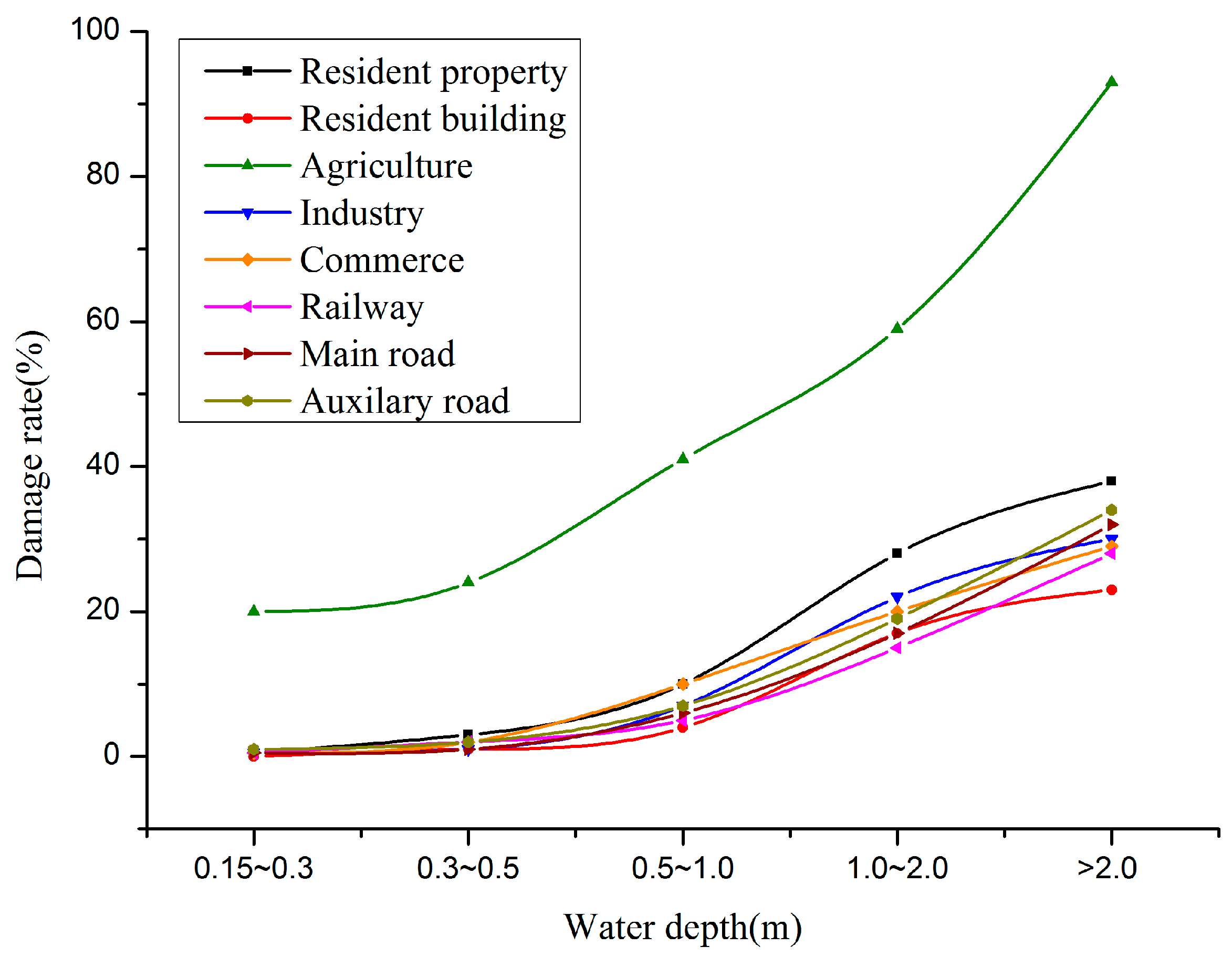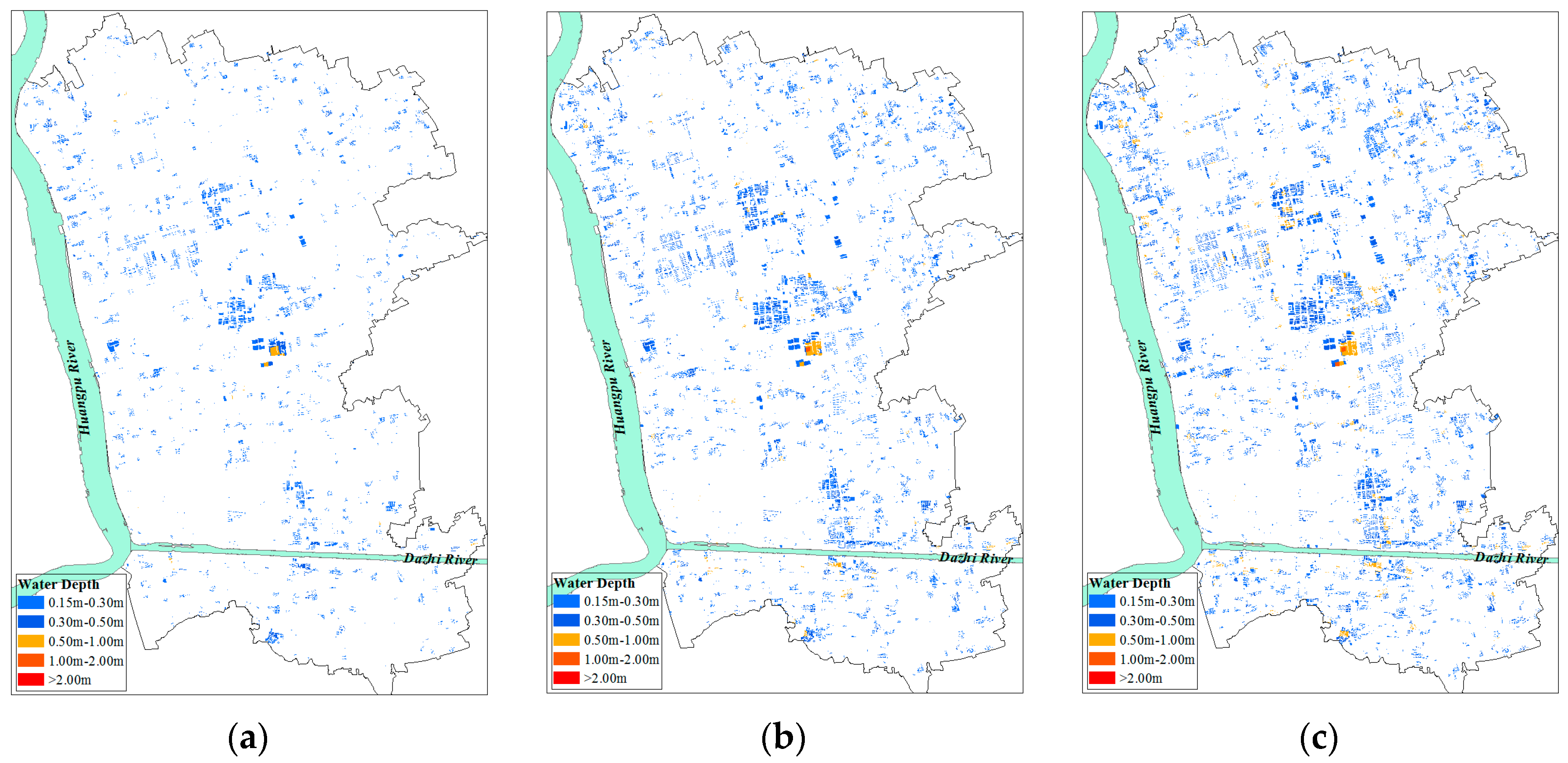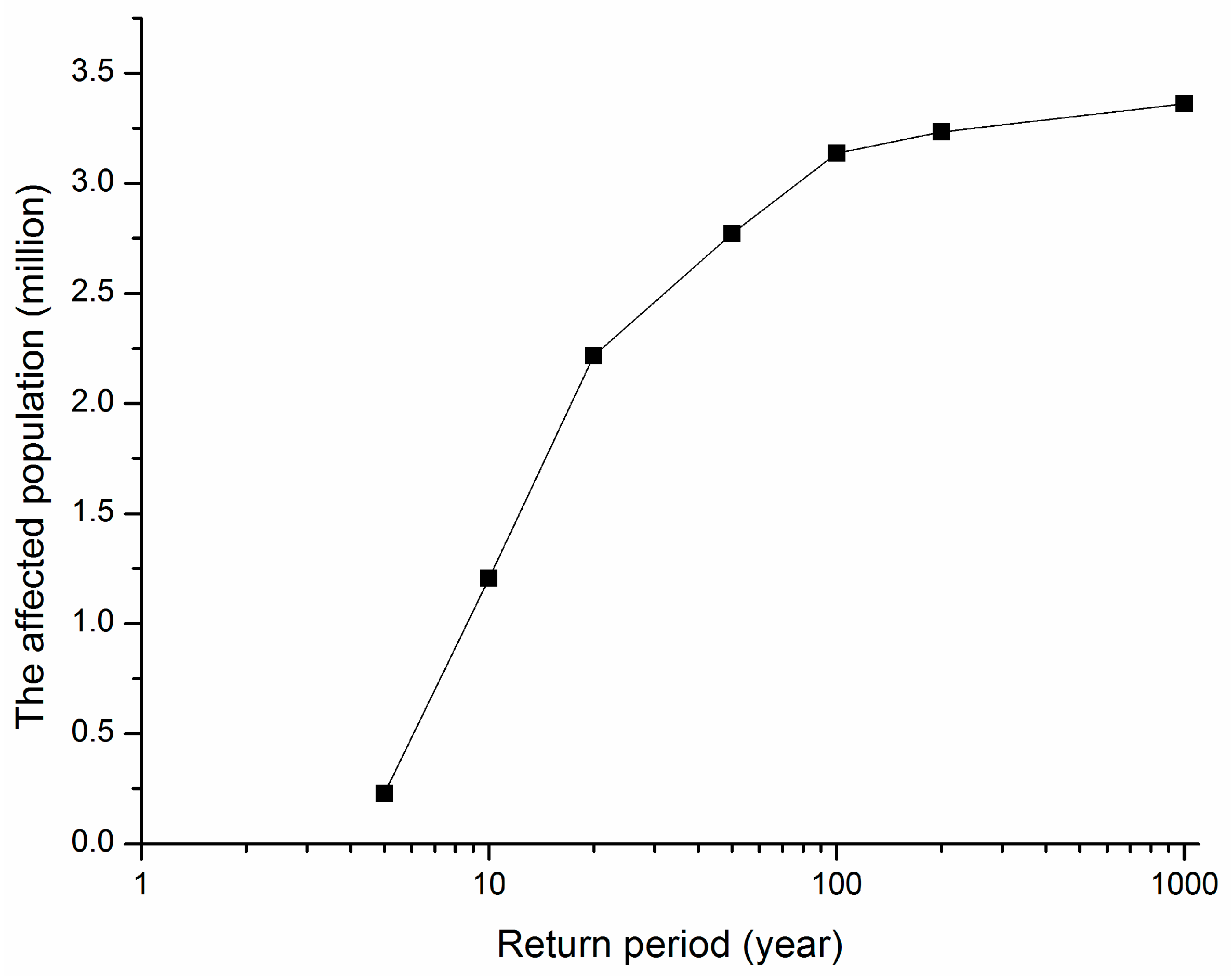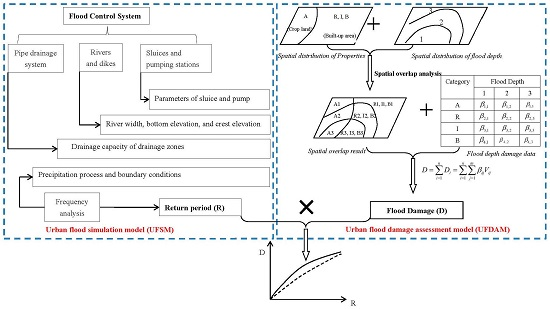1. Introduction
With the rapid development of urbanization, flood risks become more and more severe [
1]. Since the 1950s, the number of urban flood disasters has been gradually rising in China. The flood damage is higher than it was in the past. According to the 2015 China flood and drought report, more than 100 cities have suffered waterlogging per year since 2006. The numbers of waterlogged cities were 130 in 2008, 258 in 2010, and 234 in 2013, respectively. Nearly 62% of 351 cities were waterlogged between 2008 and 2010. The vast majority of flooding and waterlogging disasters are caused by local extreme rainstorms. Flooding and waterlogging disasters remain one of the main challenges faced by developing counties. They not only cause high mortality and suffering, but also damage local economies that are in process of formation and thwart development achievements [
2]. To ensure security, a large number of flood control works and drainage systems have been built to reduce the economic losses associated with flood disasters. As shown in
Figure 1, the total length of drainage pipelines is proportional to urban construction land area, and the correlation coefficient is 0.96.
For flood hazard-affected bodies themselves, the subjective reasons for frequent occurrence of flooding and waterlogging disasters are analyzed as follows: (1) Cities expand in high flood hazard areas; (2) The development of drainage systems is slower than the city development; (3) Impervious areas increase; (4) The large population and property density result in an increased flood vulnerability in urban areas.
With the continuous expansion of cities, the urban flooding and waterlogging problems are expected to become worse and worse unless more effective measures are adopted. The flood control work measures can be divided into two types: structural and non-structural. Key elements of structural works have been reservoirs, dikes, detention basins, pumping stations, etc. Non-structural measures include flood forecasting, flood emergency planning and response, and post-flood recovery. Distinct from technical support services, these activities directly modify the vulnerability of communities exposed to flood risks. Typically protection measures such as dikes, levees, seawalls have a certain designed capacity. When the flood scale exceeds this capacity, the structural measures could fail, and the flood damage could be more disastrous. The “protection” of flood control systems provides perverse incentives for private individuals and businesses to adapt on their own devices and may promote unwanted concentrations of population/businesses in hazard-prone areas. Thus it is difficult to meet the increasing demands for flood control solely relying on structural measures. Appropriate non-structural measures provide sound strategies for sustainable development. According to Wang’s research, reasonable land use planning based on flood risk analysis will decrease the future flood risk by 39%–50% in Taihu Basin [
3]. The economic losses associated with flood and waterlogging can be reduced by scientific flood risk management. Reasonable flood risk analysis can provide crucial information for strategy development and planning adaptation.
Natural disaster risk assessment methods generally are of three types: mathematical statistical methods, index system methods, and dynamic risk evaluation methods based on integrated models. The disaster trends are summarized based on the first method according to the analysis of historical flood disaster data. Benito provided a scientific method based on palaeoflood and historical data for flood risk analysis [
4]. The index system methods focus on the selection of disaster risk indexes, optimization, and calculation of their weights. Okazawa established a global flood risk index based on both natural and social factors [
5]. In order to estimate the flood risk index at a spatial resolution of city/county/town units for a river watershed, Seiler used the standardized precipitation index for flood risk monitoring [
6]. With the development of hydrological models, hydraulic models and Geographic Information System (GIS) technology, integrated models have been widely used in recent years. Flood inundation information and socio-economic information are analyzed by spatial overlay analysis [
7,
8]. Detailed geographic information data is needed to construct integrated models based on GIS. For the first two methods, it is difficult to describe the relationship among the main factors, or provide the evolutionary trends of flood risk and time-series inundation information. When the evaluation objects and conditions change, these methods cannot adjust in real time and the uncertainty and dynamics of the disaster system cannot be revealed as well, so the third method has become the mainstream direction of current research on natural disaster risk assessment.
Crichton proposed that flood risks depend on three elements: hazard, vulnerability, and exposure [
9]. The flood risk can then be represented as follows [
10,
11]:
The hazard means the threatening natural event including its probability of occurrence, and it generally quantified as the water depth and water flow velocity distribution. The exposure refers the people/assets that are present at the location involved. The vulnerability indicates the characteristics and circumstances of a community, system or asset that make it susceptible to the damaging effects of a hazard [
12]. Flood disasters are predictable and controllable, which are features that distinguish floods from other natural disasters such as earthquakes and volcanic eruptions. The capacities of flood forecasting, early warming and flood control can be enhanced to mitigate the impact flood disasters. Hence, the capacity should be also considered. The capacity can be quantified as the flood risk reduction. The flood risk reduction comprises the flood damage averted in the future as a result of schemes to reduce the frequency of flooding or reduce the impact of that flooding on the affected property and economic activity, or a combination thereof. Spatially explicit hydrodynamic flood simulation models play an important role in flood risk reduction assessment.
However, flood risk assessment in urban areas is more complex than in rural areas because of their closely packed buildings, different kinds of land uses, and large amounts of flood control works and drainage systems [
13]. In this study, a framework was developed which combines urban flood simulation and flood damage assessment. A key element of this framework that makes it suitable for risk reduction assessment is the ability to provide objective inundation information with the consideration of buildings, land uses and flood control works. In terms of the concept of the risk triangle, the hazard, exposure, and vulnerability of storm waterlogging were analyzed. The R-D function was proposed to measure the effectiveness of flood control works and provide indications of the changing resilience. The results could be critical for land use planning, for flood control works design, for mapping evacuation egress routes, and for locating suitable emergency shelters to name but a few risk treatments [
14].
2. Study Area
Shanghai, which is located in the estuary areas of the Yangtze River, is one of the most important core regions of economic, transportation, industry, science and technology in China (
Figure 2). Shanghai has developed rapidly due to its various advantages, such as a highly developed industry, a stable economic base, and a dense population. Shanghai ranked first among Chinese cities in terms of GDP in 2015. Meanwhile, Shanghai is a flat land, which is prone to serious flood disasters caused by “plum rains”, typhoons, and storm surges. The flood risk features in Shanghai are very sensitive to both disaster-causing factors and social economy. Shanghai is divided into four flood protection areas: Pudong, Puxi, Hangjiahu and Yangchengdianmao. The Pudong flood protection area (2722 km
2, hereinafter referred to as Pudong) is a coastal part of Shanghai located in the right bank of the Huangpu River, which is taken as the study area in this paper. The estuary of the Yangtze River is situated to the north, the East China Sea to the east, and Hangzhou Bay to the south. The location of Pudong is shown in
Figure 2. The Huangpu River originates from Tai Lake and Dianshan Lake. It meanders through the whole city from west to east in the upstream. The terrain of Pudong is relatively flat. The ground surface elevation ranges from 3.5 m to 4.5 m based on the Wusong Datum, and the northwest is lower than the southeast. The Pudong flood protection area contains five administrative districts: Pudong New District, Fengxian District, part of Minhang District, part of Songjiang District, and part of Jinsan District. Considering the threat of flooding caused by typhoons, plum rains and river floods, Shanghai has implemented a comprehensive flood defense system which consists of dikes, floodwalls, gates, pumps and drainage pipe networks.
Shanghai is vulnerable to flooding due to its geographic location on flat and low-lying terrain, rapid socio-economic development, land subsidence, and climate change. In 2005, No. 9 Typhoon Matsa affected Shanghai. It caused a direct economic loss of 1.358 billion CNY, which included agricultural losses of 843 million CNY and industrial losses of 158 million CNY. A recent flood occurred in 2013, caused by No. 23 Typhoon Fitow. It was reported that several river dikes in the upstream were overtopped or broken, and the maximum inundation depth in Songjiang District was estimated at more than 2.5 m [
15,
16,
17]. The adjacent farmland and residential areas were flooded.
